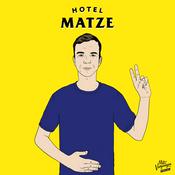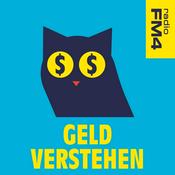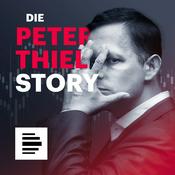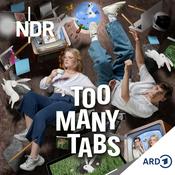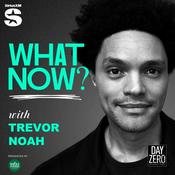Verfügbare Folgen
5 von 148
- My art, my communityThis week, we hear from artists who’ve been making a difference in their local communities. Sudanese filmmaker Hajooj Kuka first spoke to The Cultural Frontline in 2019 when he was filming the protests taking place after Sudanese President Al Bashir had been deposed following 30 years of authoritarian rule. Anu Anand catches up with Hajooj to hear about the community filmmaking projects he’s been undertaking through his local neighborhood committee.The Russian Tajik musician and campaigner Manizha moved with her family to Russia aged four to escape the civil war in Tajikistan. A successful singer songwriter, she was the last person to represent Russia at the Eurovision Song Contest. She explains how many of her concerts have been cancelled due to her opposition to the war in Ukraine and how her music supports the work of her SILSILA foundation which helps those who have experienced domestic violence, along with championing the rights of refugees and migrants.Shine Tani is a successful Kenyan artist with his art gallery at the centre of the Banana Hill community just north of Nairobi. Shine came from a poor background, surviving by begging and performing as an acrobat on the streets with his brothers. Self-taught, he now represents over 100 artists from across the continent and his work has helped change the status of local art in the country.--------27:44
- Reclaim and resist: Canada's indigenous musiciansThe myriad of indigenous communities in Canada share a painful history. But today, Canada’s indigenous artists are using music, from rock to round dance, to interrogate still-felt horrors, to heal, and to share stories, culture and languages that were violently suppressed for decades.In Toronto, the traditional territory of the Chippewa, the Haudenosaunee and many other nations, we meet Jeremy Dutcher. His debut album Wolastoqiyik Lintuwakonawa, is sung entirely in the language of his Wolastoq community, and is a mix of opera, pop melodies and piano.In the city of London, the traditional territory of peoples such as the Attawandaron and Anishinaabeg, Anishinaabe musician Adam Sturgeon puts healing at the forefront of his bands Status/Non-Status and Ombiigizi's artistic vision.Further west, in Winnipeg, lives composer Melody McKiver. They are an assistant professor of Indigenous Music at the University of Manitoba, where they are putting together courses to educate students on indigenous history, through the lens of music. They are a member of the Obishikokaang First Nation. Even further west, in the Treaty 6 territory of Alberta, lives Fawn Wood. A Plains Cree and Salish Tribes traditional singer, Fawn is one of the first female indigenous musicians to use a hand drum in her music.Producer: Sasha Edye-Lindner A Just Radio production for BBC World Service(Photo: GasS. Credit: Matthew Wiewel)--------27:40
- Who should fund the arts?What resources do artists around the world need to express themselves fully? Where should the money come from? And what, if any role should governments play? This week we’re exploring the question of who should pay for the arts and how. It’s one with broad implications for the type of culture being made, and the type of people who get to make it. Brazilian writer, illustrator and Cultural Manager Mauricio Negro tells Tina Daheley about a tumultuous time for Brazilian artists, brought about by former President Jair Bolsonaro’s cultural reforms, which included the dissolution of Brazil’s Ministry of Culture and significant cuts in government funding available the culture sector.Marcel Pardo Ariza is a contemporary Colombian artist working in photography and installation who uses ‘they/them’ pronouns. In October 2021 they were offered a place on San Francisco’s new Artists Minimum income scheme, receiving $1,000 per month to sustain their career as an artist. They tell us about the impact the money had on them and their work. Americans for the Arts Executive Director Nina Ozlu Tunceli then debates the broader implications of such a scheme with US writer and commentator Alexander Zubatov. Plus US artist Natasha Bouchillonn talks about combining her skills in marketing and art to create a very successful business, an example of how an entrepreneurial approach can help artists who may not think they can afford it to sustain a career free of government support. And South African playwright Mike Van Graan reflects on his career campaigning for broader access to culture in the country for artists and audiences. Van Graan, who was a cultural advisor to the country’s first post-apartheid government, recently took part in a review of the theatre and dance sectors in the country that led to a set of proposals including the issuing of special vouchers to enable poorer households to attend the theatre.(Photo credit: Spencer Platt/Getty Images)--------27:39
- What the AI revolution means for artsOn this week’s programme we’re looking at the explosion of interest in the role of artificial intelligence, particularly since the arrival of a new generation of AI powered chatbots like Google Bard, DALL-E 2 and Open Al’s ChatGPT, which is reportedly the fastest growing consumer app of all time. Tina Daheley talks to two visual artists using AI in their work; Dr Melisa Achoko Allela and Jeremiah Ikongio. Melisa’s virtual reality storytelling project uses ChatGPT to help retell and digitise traditional African stories. Jeremiah uses an AI algorithm to generate new artworks based on the style of the late Nigerian modernist painter Uche Okeke. Jeremiah has since developed his own AI web application AfroDreams to create a mix of contemporary and traditional images. The Swedish drama director, Jenny Elfving and Polish science researcher Piotr Mirowski are two members of the creative team behind the AI experimental theatre company Improbotics. The company have developed an onstage chatbot called A.L.Ex, which can generate lines for actors to respond to during spontaneous improvised performances. We hear A.L.Ex and the actors in action in the programme.US artist Holly Herndon works with computer software and AI to create innovative music, songs and sounds. She told the BBC’s Andrea Kidd how she has developed a digital computer twin called Holly + that can sing melodies in a number of languages and styles using Holly’s original voice.Producers: Anna Bailey, Andrea Kidd and Hannah Dean.(Photo: Improbotics perform on stage. Credit: Eleanora Briscoe/Edinburgh International Improv Festival 2020)--------27:23
- Ukraine one year on: The artists’ responseTo mark the first anniversary of Russia’s invasion of Ukraine, Tina Daheley talks to documentary film directors Alisa Kovalenko and Yelizaveta Smith about their experiences over the past year and how that has shaped their work. Alisa’s feature We Will Not Fade Away tells the story of teenagers growing up in eastern Ukraine against the background of war and was selected for the Berlin Film Festival. Yelizaveta’s feature School Number Three is about a school in the Donbas, which was destroyed during the war. Andrey Kurkov is one of Ukraine’s most famous and prolific writers. His novel Death And The Penguin is a worldwide best seller and his books are full of black humour and intrigue. He is also a diarist who has been sharing his thoughts and experiences on life in Ukraine for the BBC. To mark this first anniversary he has written a piece especially for The Cultural Frontline.Ukrainian comedian Hanna Kochegura is currently taking her stand-up across Ukraine in a countrywide tour visiting 19 cities. She tells us why humour can be powerful in a time of war.Over the past decade, the club scene in Kyiv has been growing, with thousands of people attending raves known for their raw energy and vibe. One of the people at the centre of this scene is Pavlo Derhachov, co-founder and manager of the experimental club Otel’. He told The Cultural Frontline about the impact of the invasion on the club.(Image: A drawing of a bird on a wall in Kyiv. Credit: Roman Pilipey/Getty Images)--------28:16
Weitere Gesellschaft und Kultur Podcasts
Trending Gesellschaft und Kultur Podcasts
Über The Cultural Frontline
The Cultural Frontline: where arts and news collide.
Podcast-WebsiteHöre The Cultural Frontline, Schwarz & Rubey und viele andere Podcasts aus aller Welt mit der radio.at-App
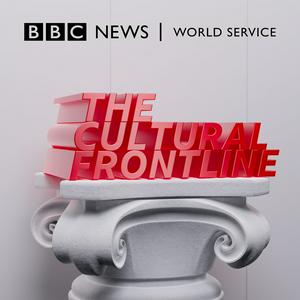
Hol dir die kostenlose radio.at App
- Sender und Podcasts favorisieren
- Streamen via Wifi oder Bluetooth
- Unterstützt Carplay & Android Auto
- viele weitere App Funktionen
Hol dir die kostenlose radio.at App
- Sender und Podcasts favorisieren
- Streamen via Wifi oder Bluetooth
- Unterstützt Carplay & Android Auto
- viele weitere App Funktionen


The Cultural Frontline
Code scannen,
App laden,
loshören.
App laden,
loshören.



